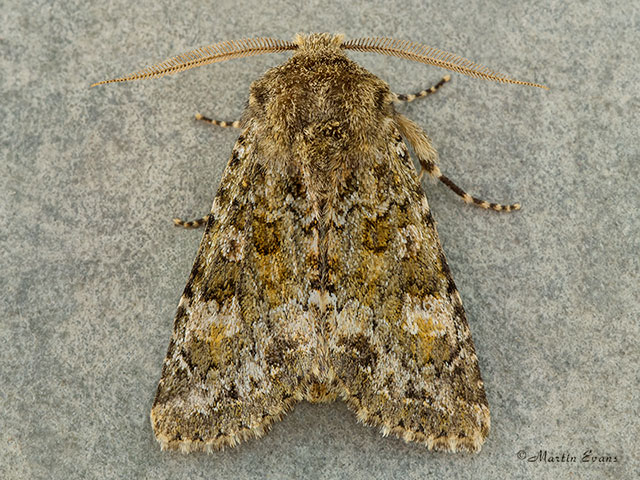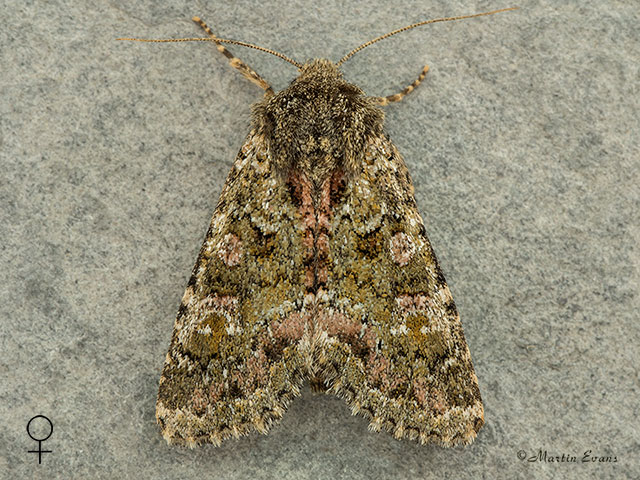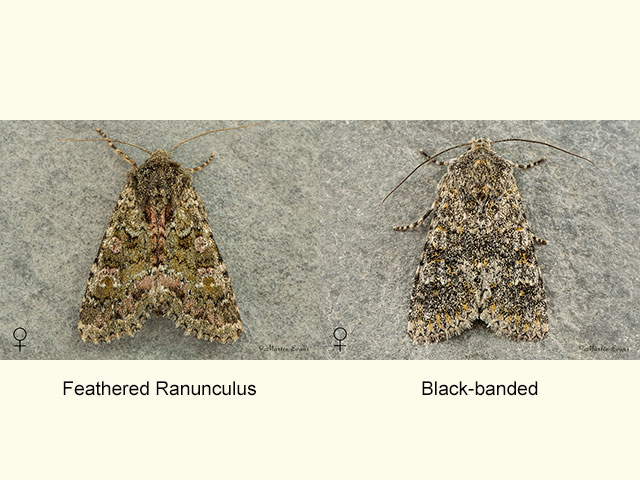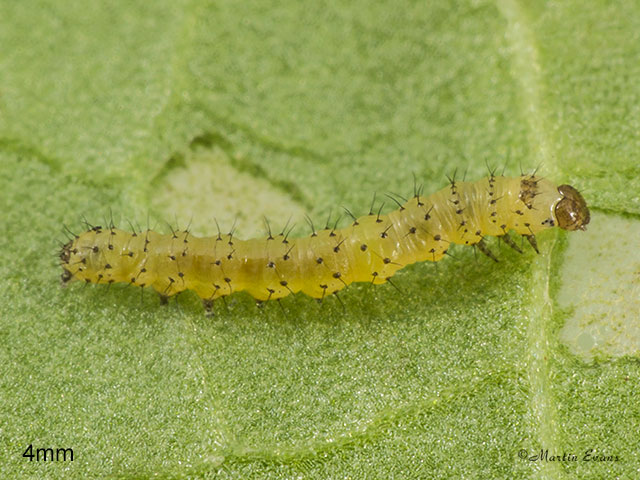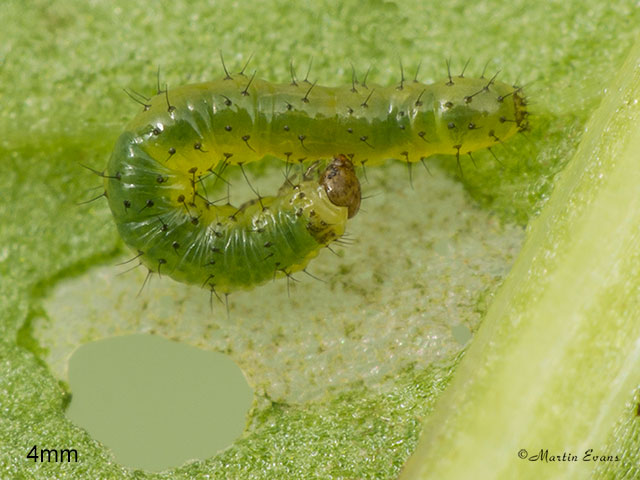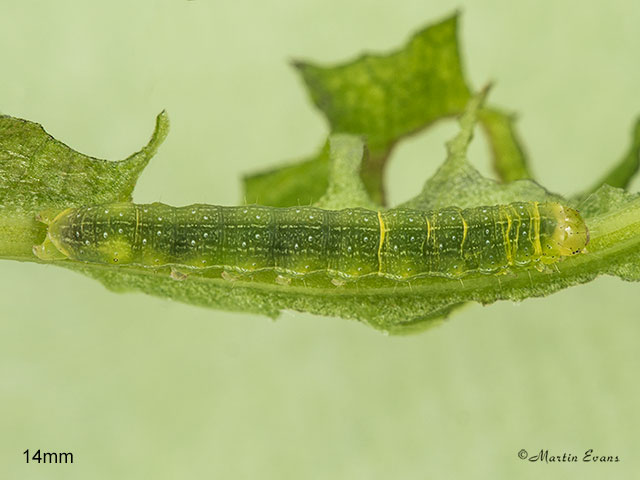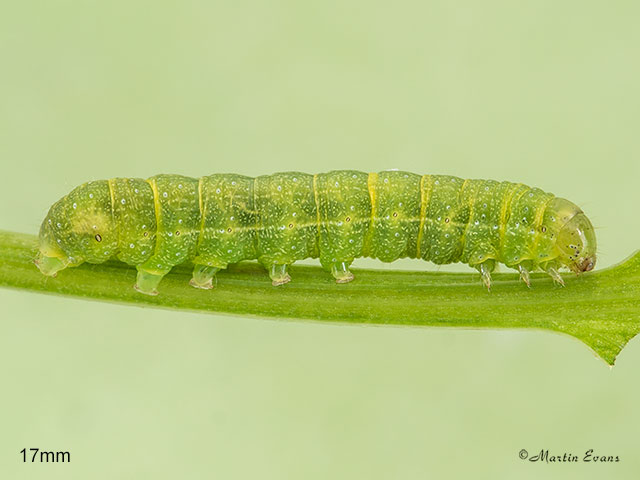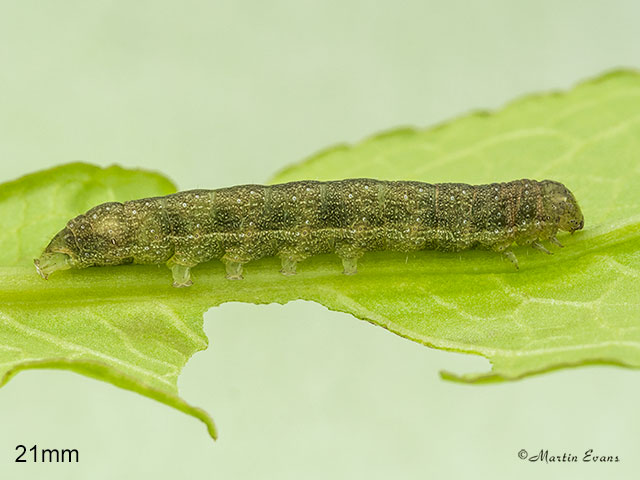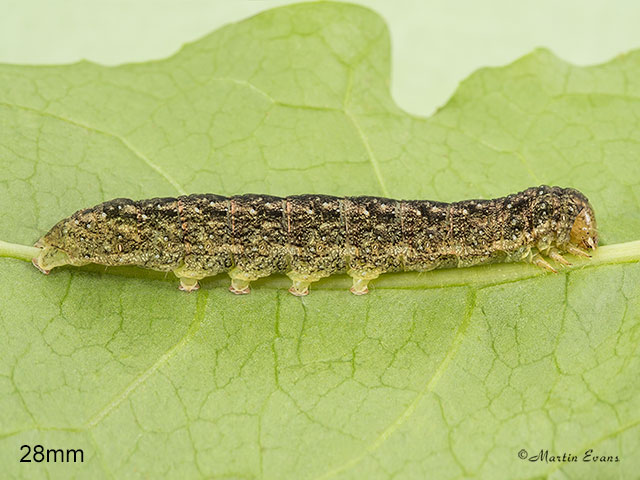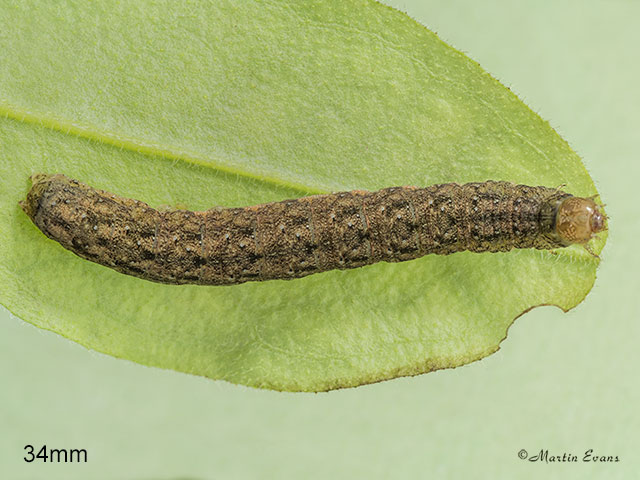Noctuidae
73.235 Feathered Ranunculus Polymixis lichenea lichenea (Hübner, [1813])
Local
Polymixis lichenea scillonea Richardson, 1958
Scilly Isles
Description: The pink or yellow markings are not sex specific as could be inferred from the pictures.
Similar species: Black-banded Polymixis xanthomista statices has grey markings rather than grey-green, with a dark band across the forewing and only yellow rather than pink and yellow highlights. The males have simple antennae.
Forewing: 15 to 18mm
Habitats: Coastal cliffs, vegetated shingle, sand-dunes, calcareous slopes on or near the coast and gardens.
Habits: The moth feeds at over-ripe blackberries and Ivy and is attracted to sugar. It comes to light usually after midnight..
Foodplant: The larva feeds nocturnally on Thrift, docks, Dandelion, Sea Plantain, other plantains, ragworts, trefoils, Hound's Tongue, Biting Stonecrop, Wild Cabbage and other herbaceous plants growing in sheltered sites. It pupates under the soil in a tough cocoon.
